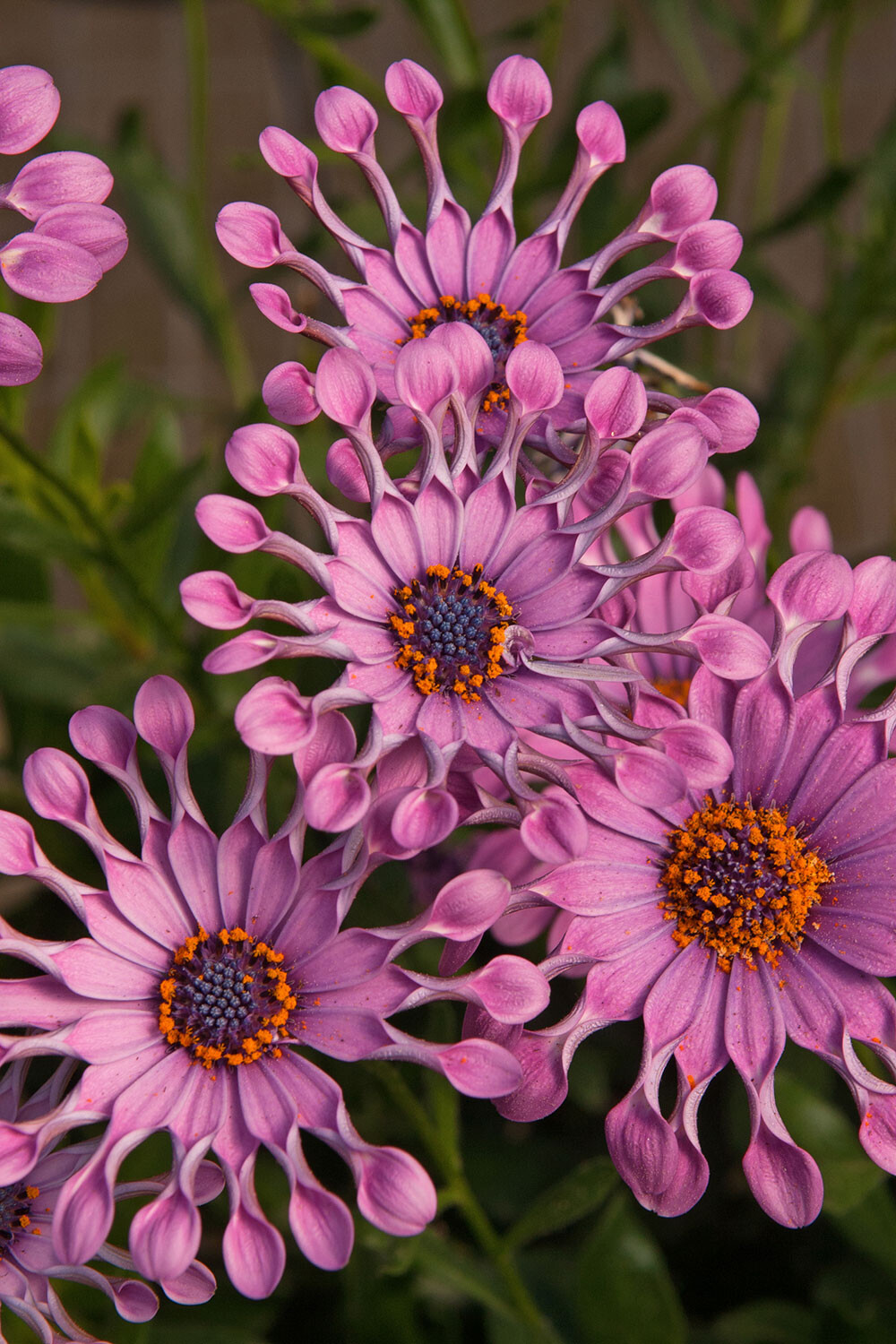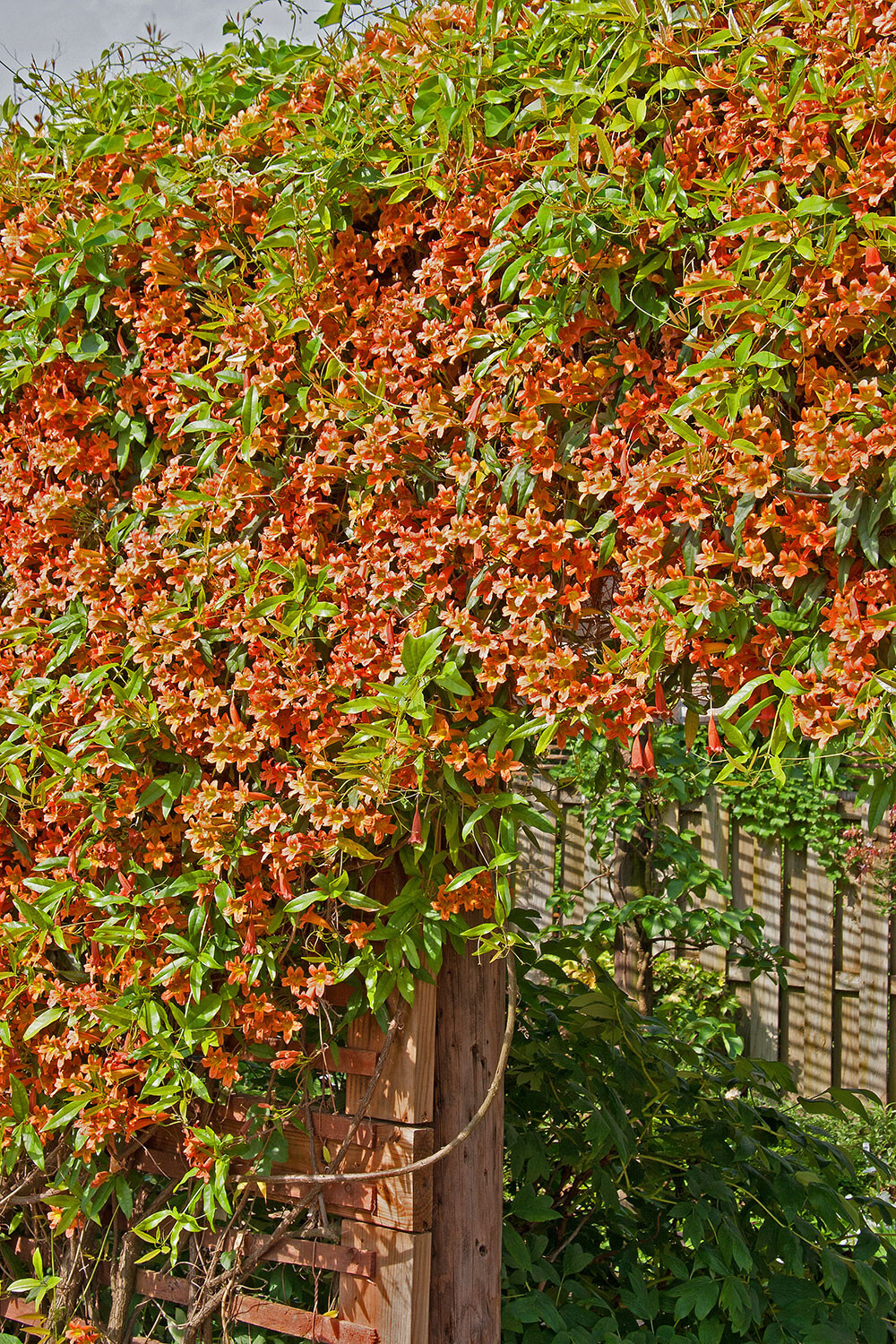Have an ugly fence or wall in need of being dressed up? Trellis looking bare and bland? Like the idea of lounging under a canopy of living shade? Searching for a vertical landscape accent? If your answer is “yes” to any of these questions, I have a solution, but it might not be for the fainthearted gardener.
The crossvine (Bignonia capreolata) is a strong climber that covers a lot of territory — its branches can effortlessly stretch to over 30 feet if allowed to roam. That’s big. That’s bodacious.
Native to the Southeast, crossvine is a woody ornamental that can survive typical winters in the Cary area, although it might slip to semi-evergreen during prolonged cold spells. Its name comes from the cross shape that can be found on the end of a cut stem.
Springtime is when this climber is really in its full glory because it becomes festooned — yes, I said “festooned” — with trumpet-shaped blooms that are normally reddish-orange and yellow in color, and they are irresistible to bees, butterflies, and (especially) hummingbirds. Its dazzling display can last up to a month, with lesser blossoming continuing well into the summer.
This native beauty caught the attention of plant breeders, meaning catchy cultivars have been developed. ‘Tangerine Beauty’ is probably the most popular of current selections, but ‘Jekyll’ is also worth considering for its improved durability to nasty winters. Crossvines shouldn’t be hard to spot at local nurseries this time of year, and they certainly are easy finds online.
Crossvine blooms best in full sun, so site it accordingly. Also, keep it happy by planting in well-draining soil that has been heavily amended. To maintain crossvine to a desirable size, every two to three years, whip out the pruners after its initial big spring flower show winds down. Crossvine can spread by root suckers that pop up close to the momma plant, but if you want to keep it in bounds on the ground, just dig up the crossvine wannabes.
Speaking of spreading, the similar looking trumpet vine (Campsis radicans) is often compared to, and confused with, crossvine. The main difference is that trumpet vine, which is also a native capable of growing over 30 feet in length, is an invasive, garden-grabbing brute that aggressively multiplies by way of rampant, far-spreading underground runners and weedy seeds.
Stick with crossvine. Sure it can be a biggie, too, but it is an easier-to-control, beautiful, bodacious biggie.

The seeds of osteospermums, like ‘Whirligig,’ germinate better in sunlight.
Prefer directly sowing seeds in your garden? Well, sling away, backyard grower, but let the sun shine, shine, shine on the seeds of such plant delights as osteospermums, coleus, petunias, balloon flowers, nicotiana, ageratums, lettuce, and impatiens. Their seeds germinate best while basking in the full energy of direct sunlight, meaning if you plant them too deep, it will become a grave. So, simply sprinkle the plants-to-be over prepared growing ground and lightly pat them into the soil. Since the seeds are so close to the surface, be sure to keep them evenly watered until sprouts appear. Then, thing the young plantlets to their proper spacing requirements.
To Do in the Garden
March
- Besides crossvine, if you also enjoy the pleasures of annual ornamental and vegetable vines, and will be stringing trellises to guide their rambling ways, why not add more color and interest to these structures? Sure, regular white string will provide upward paths for annual vines, but so can colorful yarns that are easily found at local craft shops.
- If your green thumb has been itching to get growing in the veggie patch, give it a good scratch this month by planting cauliflower, Swiss chard, collards, dill, lettuce, asparagus, broccoli, beets, carrots, cabbage, kale, leeks, mustard greens, parsley, onions, potatoes, spinach, radishes, or turnips.
- Going to till garden beds early this month? Good idea, but first grab a handful of dirt and squeeze it. If it holds together in a tight ball, it is too wet, and if you turn the soil over in that condition, your first harvest of the season will be a bumper crop of dirt clods.
- Planning to put up new birdhouses this spring? Just remember to buy or build birdhouses made of wood. Compared to metal or plastic, wood is a better insulator, which helps prevent the feathered occupants from overheating during the sizzle of the summer.
- Garden Adventurer: The Bodacious Crossvine
- Liquid Assets: Cindy Lou Who
- Restaurant Spotlight: Peck & Plume
- Game On
- Erica Chats: Plenty to See in NC
- On Trend: Eco-Friendly Outdoor Gear
- Right on Track
- Beautiful Beaufort by the Sea
- Nonprofit Spotlight: Cary Downtown Farmers Market
- Small Business Spotlight: Going My Way Greenway Bike Rentals
- Things to Do: March 2023







